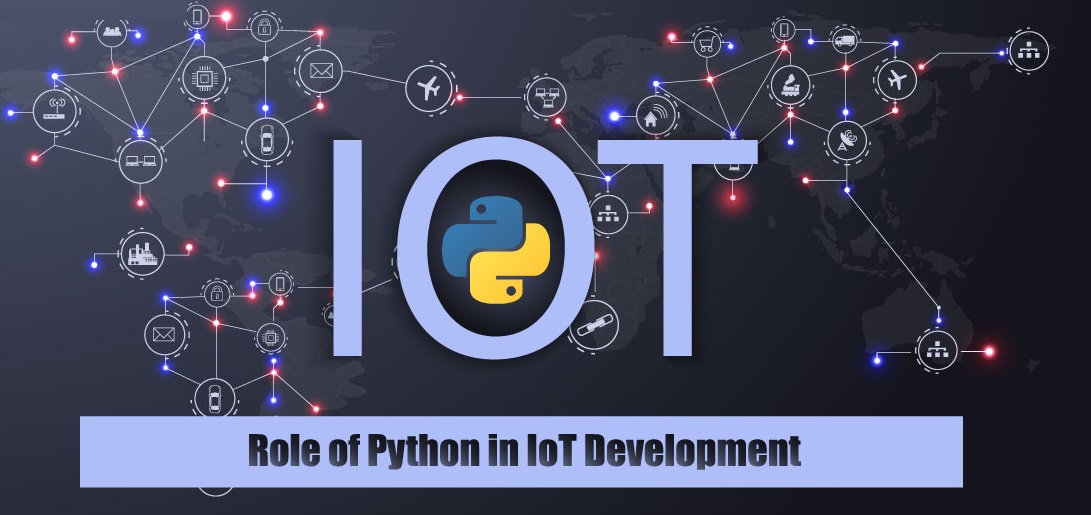The Internet of Things (IoT) has revolutionized the way we interact with everyday objects, turning them into smart devices.
At the heart of this revolution is Python, a popular programming language known for its simplicity and versatility. Combining Python with Raspberry Pi, a small yet powerful single-board computer, opens up a world of possibilities for IoT developers.
In this article, we will explore the benefits of using Python in IoT applications and how to build your own IoT project with Python and Raspberry Pi.
We will also delve into various code examples and project ideas to help you get started. So, buckle up, and let’s dive into the world of Python and IoT!
Why Python for IoT?
Python offers several advantages that make it an ideal choice for IoT development:
- Easy to learn: Python’s simple syntax and readability make it easy for beginners to pick up, allowing you to focus on building your IoT application rather than wrestling with complex code.
- Extensive libraries: Python has an extensive collection of libraries and frameworks, providing developers with ready-made tools for various IoT-related tasks such as data analysis, visualization, and communication.
- Cross-platform compatibility: Python can be run on various platforms, including Windows, macOS, Linux, and, most importantly, Raspberry Pi. This makes it easy to deploy your IoT application across different devices.
Raspberry Pi and Python
Raspberry Pi is a single-board computer that offers an affordable and flexible platform for IoT development.
Combining the power of Python with Raspberry Pi opens up endless possibilities for building IoT applications. Some reasons why Raspberry Pi is perfect for IoT development are:
- Low cost: Raspberry Pi’s affordability makes it an attractive option for hobbyists and developers alike.
- GPIO pins: The General Purpose Input/Output (GPIO) pins on a Raspberry Pi allow you to interface with a variety of sensors and actuators.
- Community support: Raspberry Pi boasts a massive community of developers who contribute their knowledge and expertise, making it easy to find solutions to common problems.
Setting Up Your Raspberry Pi
To get started with IoT development on Raspberry Pi, you will need:
- A Raspberry Pi board (e.g., Raspberry Pi 3 or 4)
- A microSD card with Raspberry Pi OS installed
- A power supply
- A keyboard, mouse, and monitor for initial setup
- An internet connection
After assembling your Raspberry Pi, follow these steps to set up Python:
Update the Raspberry Pi OS:
sudo apt update
sudo apt upgrade
Install Python and pip (Python’s package manager):
sudo apt install python3 python3-pip
Interfacing with Sensors and Actuators
To interface with sensors and actuators, you will need to install the RPi.GPIO library:
sudo pip3 install RPi.GPIO
With the RPi.GPIO library installed, you can start interacting with GPIO pins. Here’s an example of controlling an LED:
import RPi.GPIO as GPIO
import time
LED_PIN = 18
GPIO.setmode(GPIO.BCM)
GPIO.setup(LED_PIN, GPIO.OUT)
try:
while True:
GPIO.output(LED_PIN, GPIO.HIGH)
time.sleep(1)
GPIO.output(LED_PIN, GPIO.LOW)
time.sleep(1)
except KeyboardInterrupt:
GPIO.cleanup()
Example Projects
Here are some example projects to inspire your IoT journey with Python and Raspberry Pi:
Temperature and Humidity Monitoring System
Monitor the temperature and humidity using a DHT11 or DHT22 sensor and display the data on a web dashboard. This project requires the Adafruit_DHT library for reading sensor data.
Install the library:
sudo pip3 install Adafruit_DHT
Python code to read temperature and humidity:
import Adafruit_DHT
DHT_SENSOR = Adafruit_DHT.DHT22
DHT_PIN = 4
while True:
humidity, temperature = Adafruit_DHT.read_retry(DHT_SENSOR, DHT_PIN)
if humidity is not None and temperature is not None:
print(f"Temp={temperature:.1f}*C Humidity={humidity:.1f}%")
else:
print("Failed to retrieve data from sensor")
Smart Home Automation
Control various home appliances through a web interface or a mobile app. Use relays to switch appliances on and off and read sensor data from motion detectors or door sensors. For this project, you can use the Flask web framework to create a web interface.
Install Flask:
sudo pip3 install Flask
Sample Flask app to control an LED:
from flask import Flask, render_template, request
import RPi.GPIO as GPIO
app = Flask(__name__)
LED_PIN = 18
GPIO.setmode(GPIO.BCM)
GPIO.setup(LED_PIN, GPIO.OUT)
@app.route("/")
def index():
return render_template("index.html")
@app.route("/ledon")
def led_on():
GPIO.output(LED_PIN, GPIO.HIGH)
return "LED is on"
@app.route("/ledoff")
def led_off():
GPIO.output(LED_PIN, GPIO.LOW)
return "LED is off"
if __name__ == "__main__":
app.run(host="0.0.0.0", port=80, debug=True)
IoT-Based Weather Station
Build a weather station that collects and displays data such as temperature, humidity, pressure, and UV index.
Use sensors like BMP280 (temperature and pressure) and VEML6075 (UV index) to collect data and display it on a web dashboard or mobile app.
Summary
Python, with its simplicity and extensive libraries, is a powerful tool for IoT development. When combined with Raspberry Pi, developers can create cost-effective, versatile, and scalable IoT applications.
From monitoring temperature and humidity to automating home appliances, the possibilities are endless.
So go ahead, grab your Raspberry Pi, and start building your IoT project today!
Thank you for reading our blog, we hope you found the information provided helpful and informative. We invite you to follow and share this blog with your colleagues and friends if you found it useful.
Share your thoughts and ideas in the comments below. To get in touch with us, please send an email to dataspaceconsulting@gmail.com or contactus@dataspacein.com.
You can also visit our website – DataspaceAI




